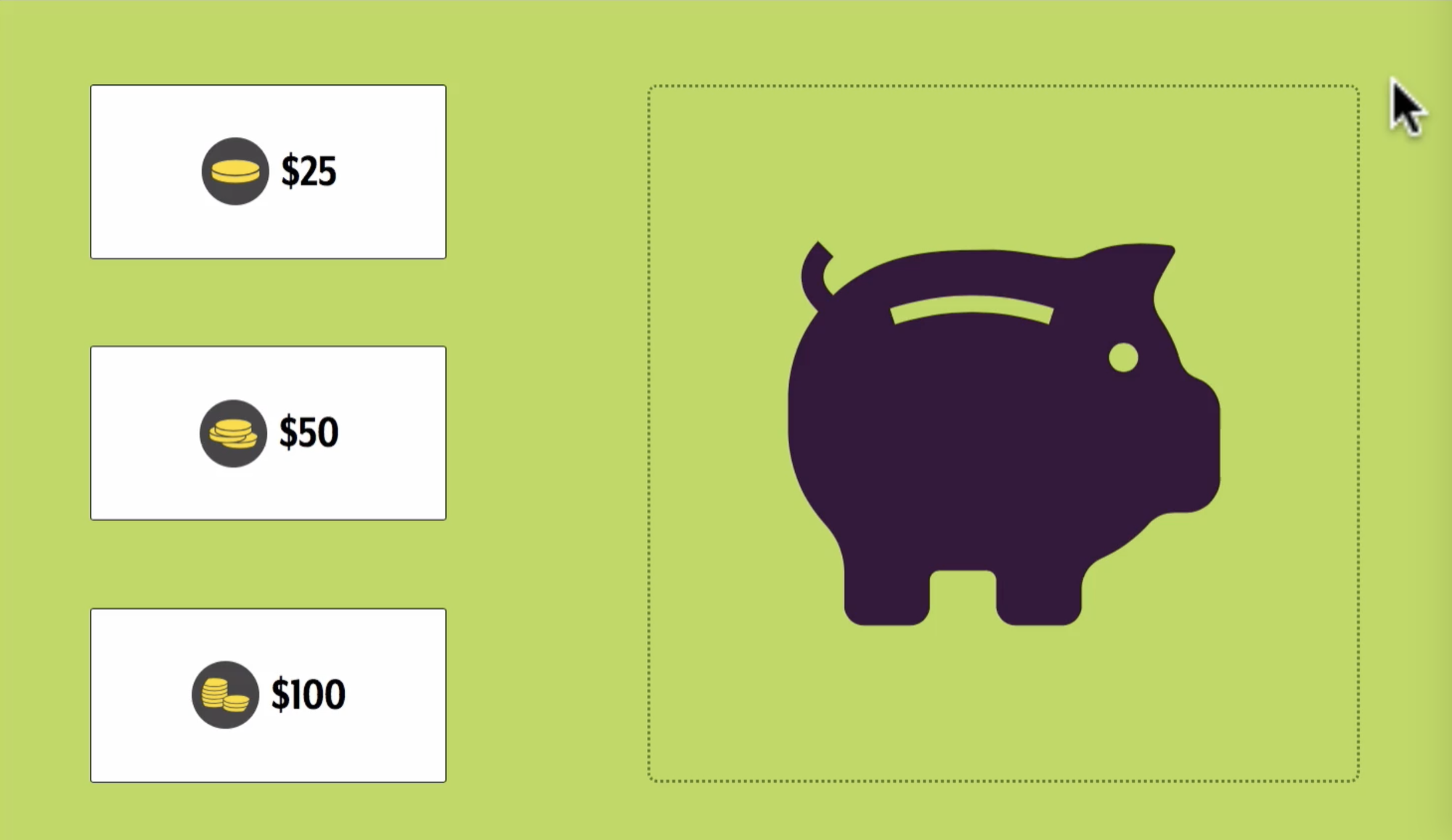Make it easier for users to operate functionality through various inputs beyond keyboard; however, it is essential that functions emulate a keyboard and that a mechanism to undo or abort an action is provided.
This guideline helps people with tremors or mobility impairments who may touch or click on the wrong location by mistake. This mistake can cause an unintended action. This success criterion also benefits people with cognitive disabilities, who can become confused when something unexpected happens because they activated a control by accident.
Examples
✗ Bad example: limited interaction options.
An interface shall not provide just one interaction option. This interface only allows for drag and drop.

✓ Good example: several interaction options.
An application that accepts donations can provide more than one way to make a donation.
- The user makes a donation by clicking on a coin shaped button with the donation amount. The user can move the pointer off of the coin before releasing it to stop the donation.
- Another example uses drag and drop. The user clicks down and drags the coin into a donation bucket. The user cancels the donation by releasing the pointer before it is over the target bucket.
- In the drag and drop example, when the user releases the coin into the bucket, a confirmation dialog requires the user to confirm the donation. Of course, to support success criterion 2.1.1, the drag and drop example also provides full keyboard support!
